Preparations and Expectations
The Latin American countries that are dependent on the the United States quickly accept the American invitation to the refugee conference. With some skepticism and hesitation, the countries of Northern and Western Europe eventually agree to attend as well. Only Italy under Benito Mussolini turns down the invitation, for domestic and foreign policy reasons. President Roosevelt appoints an advisory body on refugee issues to prepare the conference. The body consists of representatives of American Jewry and Christian denominations.
Many German and Austrian Jews who have been forced to flee hope the planned conference will lead to a more generous immigration policy in the countries where they are seeking refuge. Approximately 50 Jews whom the SA have expelled from Burgenland in Austria in mid-April 1938 also are hoping for a way out of their desperate situation: After both Hungary and Czechoslovakia refuse them entry, they are held on a boat on the Hungarian side of the Danube River, with no permission to disembark.
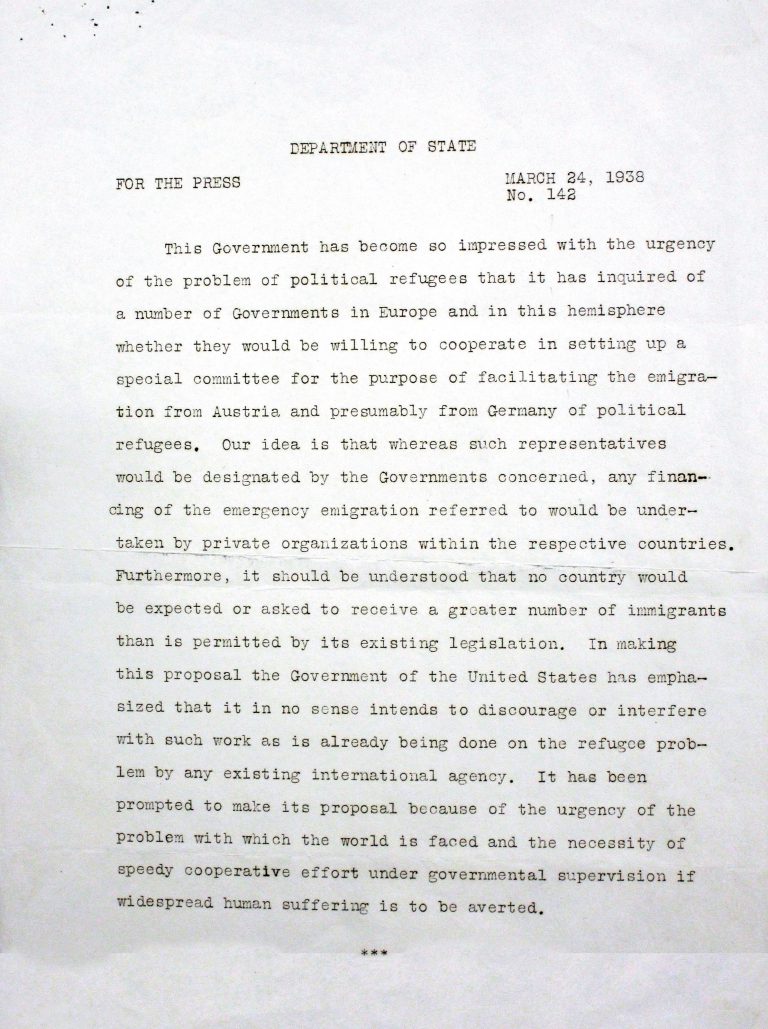
Department of State Press Release, March 24, 1938
In its invitation to the conference, the Department of State emphasizes that participating states are not expected to accept refugees beyond their current legal regulations. Several states tighten their immigration regulations before, during and shortly after the conference, effectively giving little chance for Jewish refugees to enter.
Franklin D. Roosevelt Library, Hyde Park, NY
Department of State Press Release, March 24, 1938
In its invitation to the conference, the Department of State emphasizes that participating states are not expected to accept refugees beyond their current legal regulations. Several states tighten their immigration regulations before, during and shortly after the conference, effectively giving little chance for Jewish refugees to enter.
Franklin D. Roosevelt Library, Hyde Park, NY
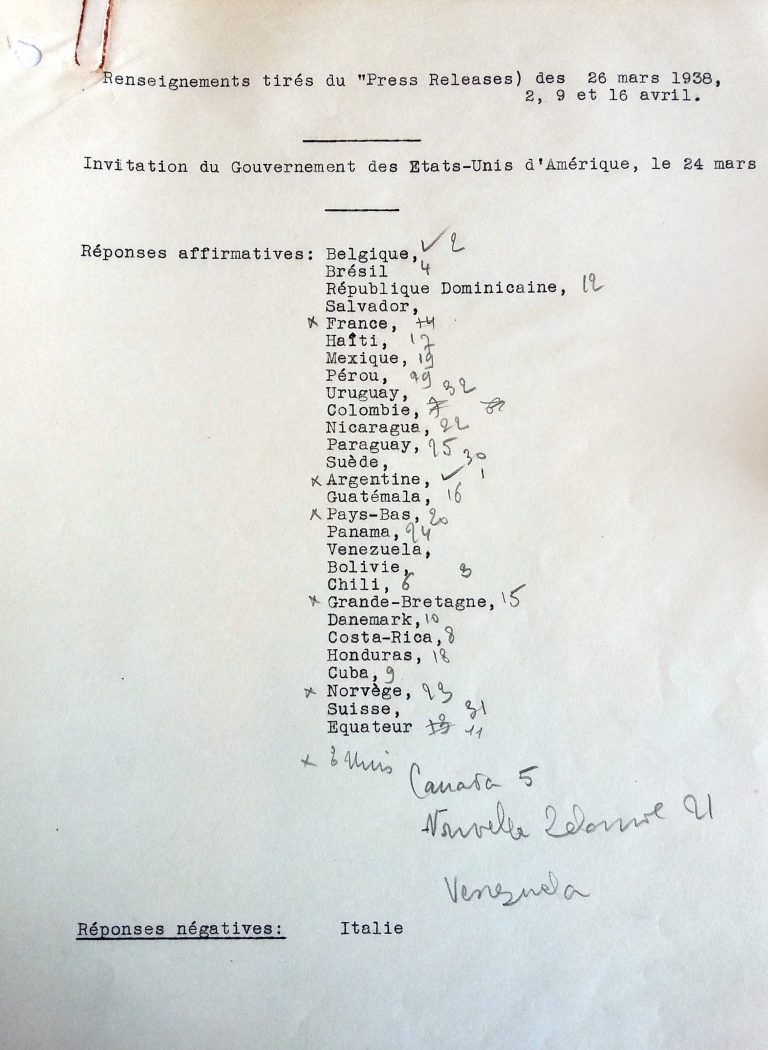
Overview of acceptances and regrets in response to the invitation of the Department of State, mid-April 1938
United Nations Archives, Genf
Overview of acceptances and regrets in response to the invitation of the Department of State, mid-April 1938
United Nations Archives, Genf
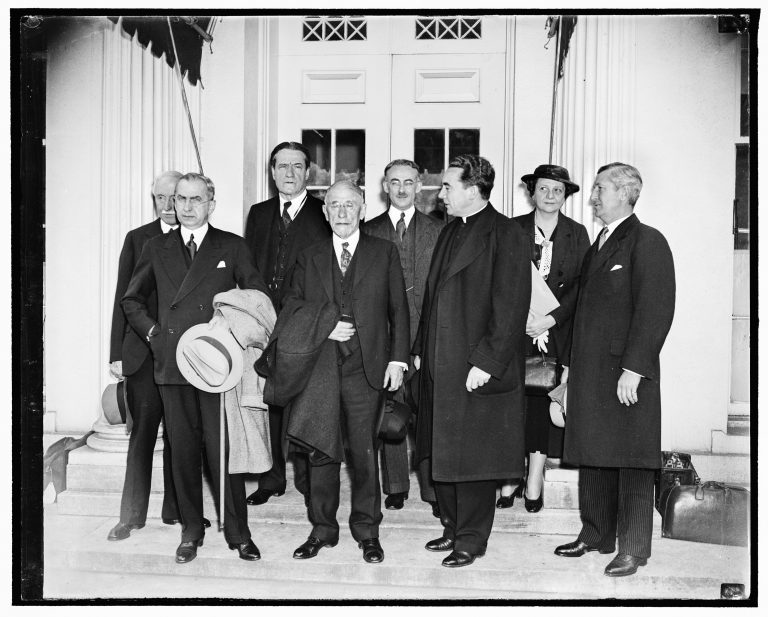
Members of the President’s Advisory Committee on Refugees in front of the White House, April 13,1938
l. to r.: New York legal scholar Joseph P. Chamberlain; Assistant Secretary of State George S. Messersmith; Rabbi Stephen S. Wise, President of the World Jewish Congress; Henry Morgenthau, sr.; New York Protestant Bishop Samuel M. Cavert; Monsignor Michael J. Ready; Secretary of Labor Frances Perkins; and Louis P. Kenedy, President of the National Council of Catholic Men, after their first meeting with President Roosevelt. The Advisory Committee is chaired by James G. McDonald, former League of Nations High Commissioner for Refugees.
Harris & Ewing / Library of Congress, Washington DC, Prints & Photographs Division, LC-DIG-hec-24424
Members of the President’s Advisory Committee on Refugees in front of the White House, April 13,1938
l. to r.: New York legal scholar Joseph P. Chamberlain; Assistant Secretary of State George S. Messersmith; Rabbi Stephen S. Wise, President of the World Jewish Congress; Henry Morgenthau, sr.; New York Protestant Bishop Samuel M. Cavert; Monsignor Michael J. Ready; Secretary of Labor Frances Perkins; and Louis P. Kenedy, President of the National Council of Catholic Men, after their first meeting with President Roosevelt. The Advisory Committee is chaired by James G. McDonald, former League of Nations High Commissioner for Refugees.
Harris & Ewing / Library of Congress, Washington DC, Prints & Photographs Division, LC-DIG-hec-24424
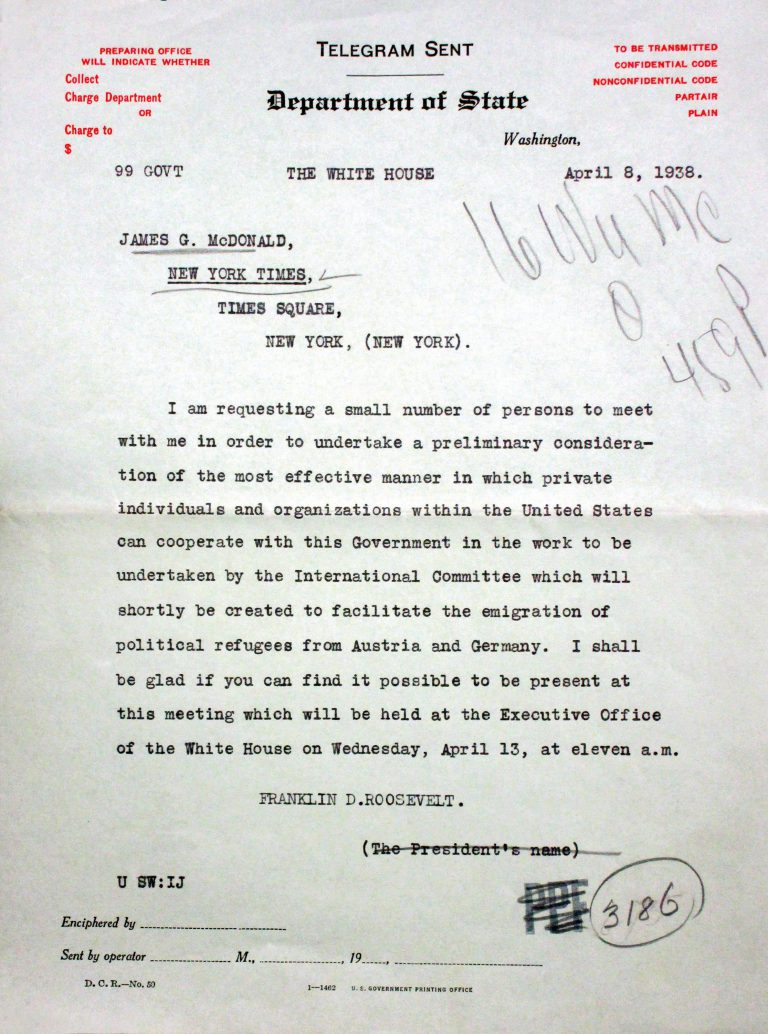
President Roosevelt to James G. McDonald, April 8, 1938
Franklin D. Roosevelt Library, Hyde Park, NY
President Roosevelt to James G. McDonald, April 8, 1938
Franklin D. Roosevelt Library, Hyde Park, NY
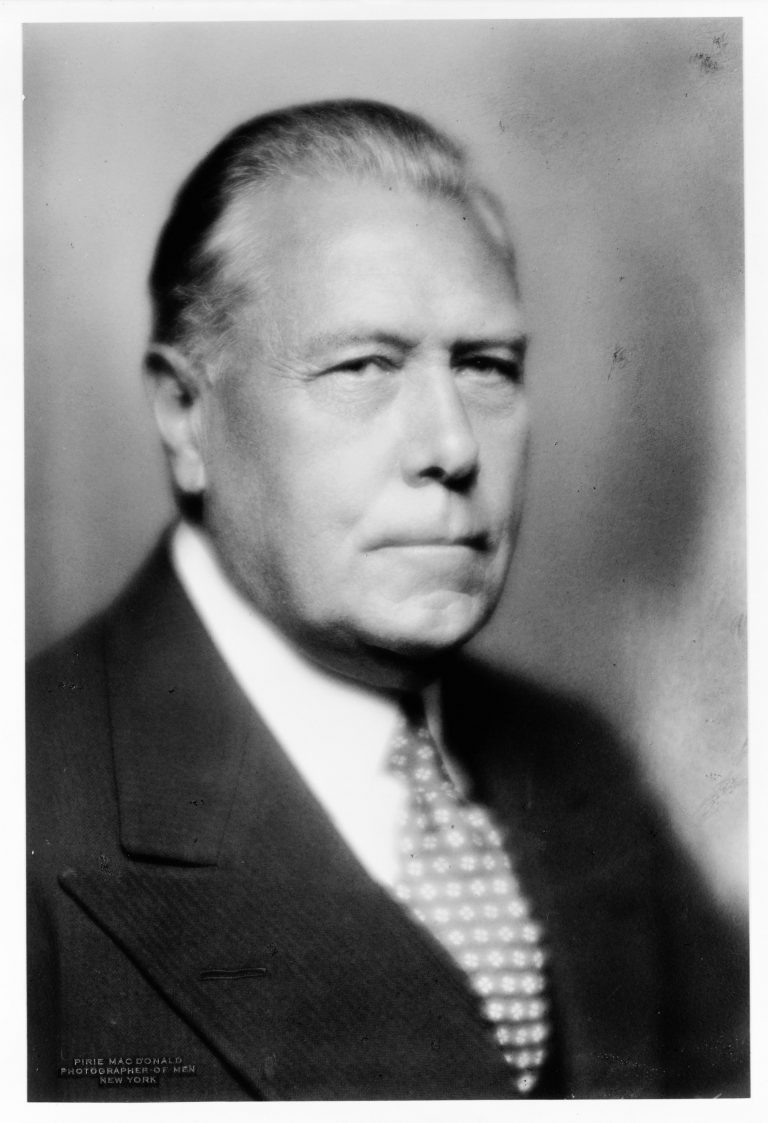
Myron C. Taylor, 1936
Soon afterward, President Roosevelt appoints the lawyer and steel industrialist Myron C. Taylor as the chief American delegate to the conference. Taylor has successfully guided U.S. Steelthrough the economic crisis, worked with unions and supported Roosevelt in his election campaigns. The President entrusts him with “bringing these people together” at the planned refugee conference.
Photo: Pirie MacDonald / Library of Congress, Washington DC., Prints & Photographs Division, LC-USZ62-100836
Myron C. Taylor, 1936
Soon afterward, President Roosevelt appoints the lawyer and steel industrialist Myron C. Taylor as the chief American delegate to the conference. Taylor has successfully guided U.S. Steelthrough the economic crisis, worked with unions and supported Roosevelt in his election campaigns. The President entrusts him with “bringing these people together” at the planned refugee conference.
Photo: Pirie MacDonald / Library of Congress, Washington DC., Prints & Photographs Division, LC-USZ62-100836

Albert Einstein and other Princeton University scientists, to Cordell Hull, March 26, 1938
Physicist Albert Einstein and mathematicians James Waddell Alexander, Marston Morse, John von Neumann, Oswald Veblen and Hermann Weyl, most of whom had fled the Nazi regime, thank the US Secretary of State for his commitment to helping others trying to flee the Nazi regime.
National Archives, College Park, MD
Albert Einstein and other Princeton University scientists, to Cordell Hull, March 26, 1938
Physicist Albert Einstein and mathematicians James Waddell Alexander, Marston Morse, John von Neumann, Oswald Veblen and Hermann Weyl, most of whom had fled the Nazi regime, thank the US Secretary of State for his commitment to helping others trying to flee the Nazi regime.
National Archives, College Park, MD
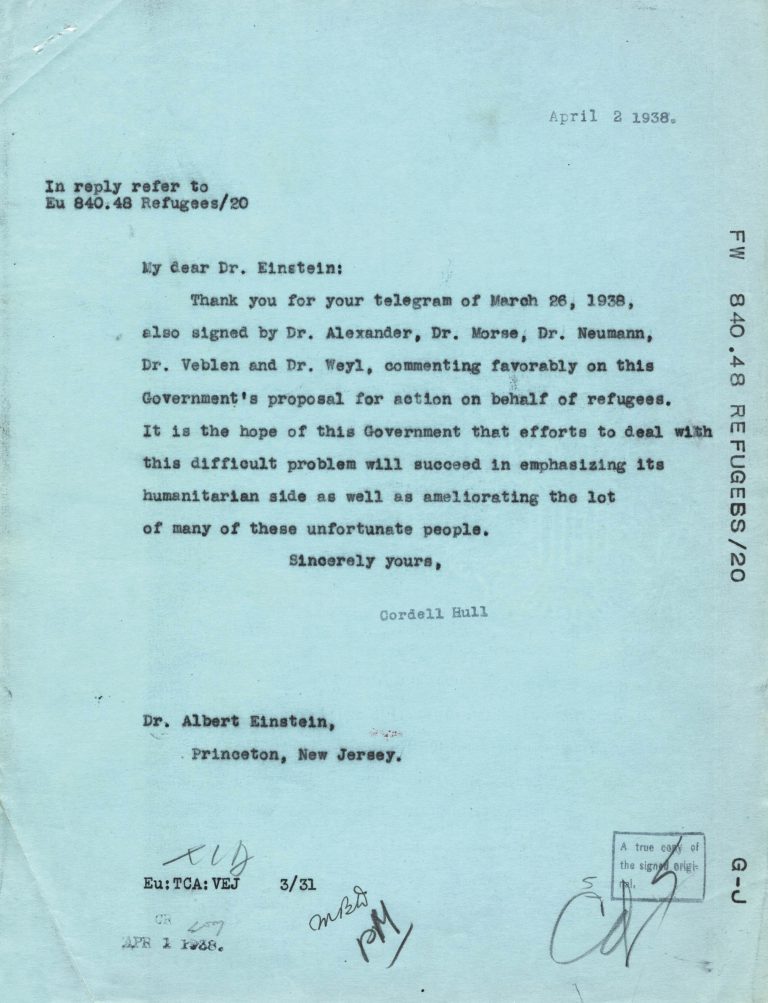
Cordell Hull to Albert Einstein, April 2, 1938
In response, Hull expresses the hope of the US government that his efforts will succeed on the humanitarian and practical levels.
National Archives, College Park, MD
Cordell Hull to Albert Einstein, April 2, 1938
In response, Hull expresses the hope of the US government that his efforts will succeed on the humanitarian and practical levels.
National Archives, College Park, MD

Illustration from the article, “47 Refugees Deported,” Daily News & Chronicle, August 8, 1938
The Jews of Kittsee, whom the SA have abandoned on a breakwater in the Danube River, are shoved back and forth between German Reich territory, Czechoslovakia and Hungary until 47 of them are placed on the Laertes. Not until September 1938 are 26 of them permitted to travel to Palestine, with British student visas. The rest are taken in by the US and Bolivia.
Schweizerisches Bundesarchiv, Bern, E4800.1#1000867#60
Illustration from the article, “47 Refugees Deported,” Daily News & Chronicle, August 8, 1938
The Jews of Kittsee, whom the SA have abandoned on a breakwater in the Danube River, are shoved back and forth between German Reich territory, Czechoslovakia and Hungary until 47 of them are placed on the Laertes. Not until September 1938 are 26 of them permitted to travel to Palestine, with British student visas. The rest are taken in by the US and Bolivia.
Schweizerisches Bundesarchiv, Bern, E4800.1#1000867#60
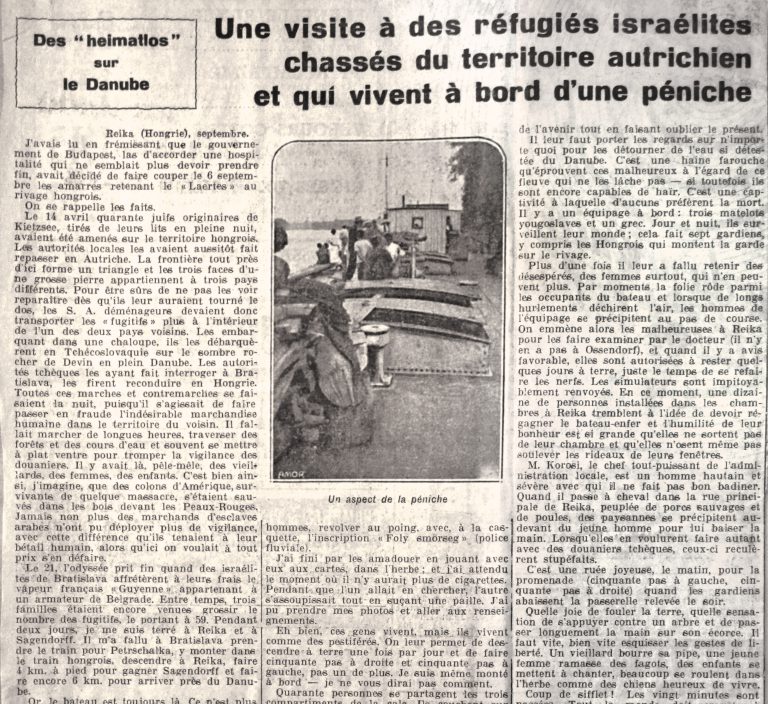
Tribune de Genève , September 13, 1938
Refugees on the Laertes.
Schweizerisches Bundesarchiv, Bern, E4800.1#1000867#61
Tribune de Genève , September 13, 1938
Refugees on the Laertes.
Schweizerisches Bundesarchiv, Bern, E4800.1#1000867#61








